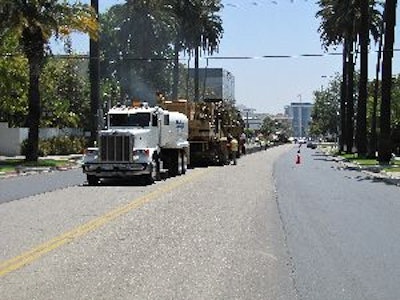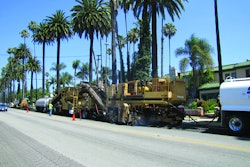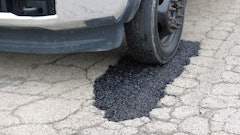
The Challenge:
Repair and repave 1.3 million square feet of roads while reducing traffic congestion during construction.
The Players:
Pavement Recycling Systems
Sully Miller Contracting
The Process:
The cold in-place asphalt recycling (CIR) process involves milling, recycling and reusing asphalt as the base course for new asphalt being placed. The CIR process is all done on the job using a train of asphalt milling, recycling and paving equipment. According to Marco Estrada, P.E. Pavement Restructuring Division of Pavement Recycling Systems, the city required one lane of traffic be open in both directions at all times. Outside lanes of traffic were open while working on the inside lanes and vice versa. The job, which was started in August 2010, took a crew of 20 employees between Pavement Recycling Systems and Sully Miller Contracting only eight days to complete.
"Cold in-place asphalt recycling is a way to take the existing asphalt and reuse it on site at a substantially reduced price of traditional mill and fill," says James Emerson of Pavement Recycling Systems. The ability to continually recycle asphalt every 20 years means one pavement system no longer has to have only one lifespan, he adds.
The process started with a 12.5-foot-wide cold planing milling machine used to mill a 12.5-foot-wide pattern at 3 inches deep, Emerson says. The front mill towed a 100% closed circuit portable recycle plant where the milled asphalt was crushed and screened until 1-inch material passed.
After being weighed on the plant's bridge the asphalt was sent into a pug mill where it was blended with Western Emulsion's engineered Pass-R emulsion. The emulsion serves as a binder and rejuvenator for the recycled asphalt. "The recycled asphalt is old and dry. The emulsion softens the existing asphalt and then binds everything together," Estrada says.
After adding the emulsion, the asphalt was dropped below the unit and then picked up by Sully Miller's material transfer vehicle and added to the hopper of the paving unit, the last element of the CIR train. Sully Miller then paved the road as usual.
The CIR process was a great solution for this Beverly Hills road repair job because it offered multiple benefits including reducing the need to truck new asphalt from the plant to the job. Emerson estimates that they eliminated 2,800 trucks from the roadway on this particular project. Another benefit was having both the milling/recycling and the paving crew working on site at the same time, which meant no one had to wait to do their job. The project saw a reduction in construction time by one-third, Emerson adds. CIR also creates a tighter surface with less loose gravel on the road. Emerson estimates a total of 42% cost savings for the Beverly Hills CIR project. Plus, the construction companies were able to do the work while keeping traffic lanes open.
Read the full article on this pavement repair job at Pavement Maintenance & Reconstruction magazine's website.





















